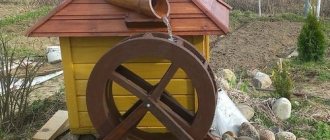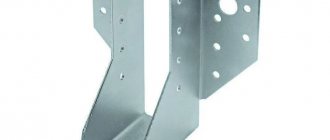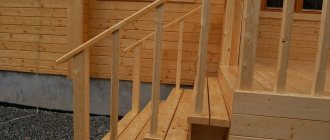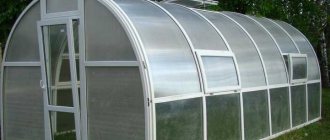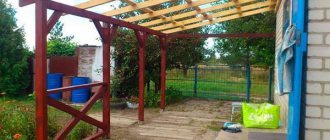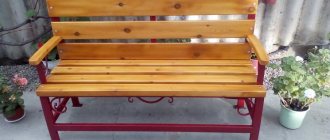Advice from experienced gardeners
Every year you should use new ropes or twines to tie tomatoes. Fungal spores or infections remain on last year's materials.
Before tying, the material is boiled or disinfected.
Important! The garter should be done slowly so as not to damage the young tomato bush. To get a good tomato harvest, you need to properly care for the plants.
Timely watering, fertilizing, prevention of diseases and pests are the basis of agricultural technology for growing tomatoes. In addition to the basic steps, it is important to know how to tie up tomatoes. Tall varieties require more garter than low-growing varieties. The support supports the bushes during the period of fruit ripening. Tethered plants are easier to spray, feed and water. Tomato leaves come into less contact with the ground, which helps prevent the development of various diseases. Thanks to tying, every gardener can get a wonderful picture: a rich harvest of tall varieties on his plot
To get a good tomato harvest, you need to properly care for the plants. Timely watering, fertilizing, prevention of diseases and pests are the basis of agricultural technology for growing tomatoes
In addition to the basic steps, it is important to know how to tie up tomatoes. Tall varieties require more garter than low-growing varieties
The support supports the bushes during the period of fruit ripening. Tethered plants are easier to spray, feed and water. Tomato leaves come into less contact with the ground, which helps prevent the development of various diseases. Thanks to tying, every gardener can get a wonderful picture: a rich harvest of tall varieties on his plot.
Making pegs yourself
You can make wooden supports for tomatoes with your own hands even without special training. For production, a pre-marked wooden board 2.0-2.5 m long, 10-15 cm wide and 5-7 cm thick is marked in width and length for the required number of stakes.
You should not save on material by using pegs with a small cross-section (up to 50x50 mm) due to the high probability of their damage under the weight of plants and the action of wind loads.
Then, using a hand or circular saw, the board is “unraveled” into bars of the selected cross-section. The resulting stakes, if necessary, are polished with a plane or using coarse sandpaper. For more convenient and easy penetration, the ends of the stakes are sharpened at an angle of 45 on one or more sides of the support.
Supports for climbing plants, firmly and with your own hands
Many plants in the garden need strong and reliable supports. Such a home-made support for climbing plants should last a long time and not spoil the appearance of the plantings. This is the homemade support design that Igor Moskvichev from St. Petersburg came up with.
“I selected well-dried blocks and boards one and a half meters long for the supports and sawed them into racks. From the leftovers, I also cut transverse strips with a cross-section of 10×10 mm and a length of 400 mm. At the lower ends of the racks I drilled holes with a diameter of 20 mm and a depth of 100 mm using a feather drill. To attach the crossbars along the entire length of the rack, I made through holes with a diameter of 9-10 mm every 150 mm.
Then, from a reinforcing bar with a diameter of 14 mm, I cut legs 400 mm long for the support racks. On one side I sharpened them on a grinding wheel, and on the other, retreating 150 mm, I welded a “step” from pieces of the same reinforcement 100 mm long. They serve to make it more convenient to drive the pins into the ground in the right place.
How to make a support for climbing plants with your own hands? I started assembling it by installing a metal leg into the end of the rack. To do this, I filled the hole in the end halfway with epoxy glue, lowered the finished rod into it, aligned it along the axis and let the glue harden. In my opinion, this joining of a wooden support post with a metal base is the simplest and most reliable. Epoxy glue can be replaced with cement mortar.
Then, with a little effort, I inserted the transverse strips into the holes of the rack, additionally fixing them with drops of glue. Instead of wooden ones, metal crossbars made of thick steel wire can be used in supports for climbing plants.
Or you can generally make a very simple and durable support; it will look good in a country-style garden and separate the vegetable garden from the rest of the garden.

And a few more options for your inspiration!
Support "Column"
Such structures can be placed on both sides of the porch of a house or a garden bench.

The manufacturing technology can be extremely simple: stick long, even poles or rods into the ground in a circle and tie them with wire.
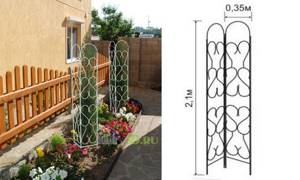
But to create a tall and durable column you need to work a little:
— fix 4 metal rods in the cement-filled foundation;
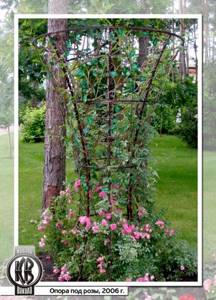
- weld several rings of wire to them parallel to each other.
Or one long rigid wire in a spiral, fixed at the points of contact with the supports.
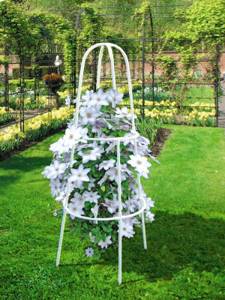
“Cone” or “wigwam” supports
These devices are convenient in a summer cottage. They are made in the form of a cone or “wigwam”. They are easy to make. Need to
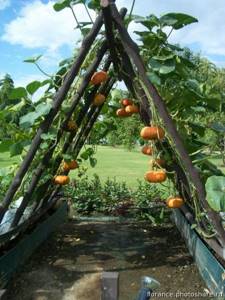
- make a marking on the ground in the form of a square;
— press 4 long, relatively even sticks into the corners at an angle and tie them together above the center of the square;
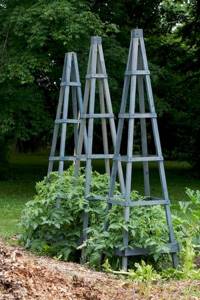
- fasten small twigs or branches crosswise onto the resulting frame; you can tie a mesh of soft wire or twine.
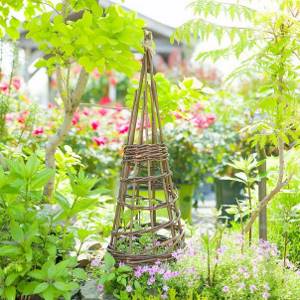
And although this design has a rough appearance at first, entwined with plants it looks very beautiful. A support for climbing plants, such as vines, is suitable.
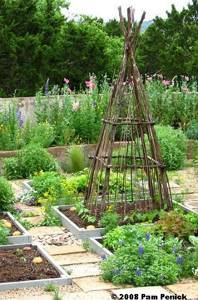
Such a device can also be made from wooden slats, fastening them with nails. It will serve you for several years.
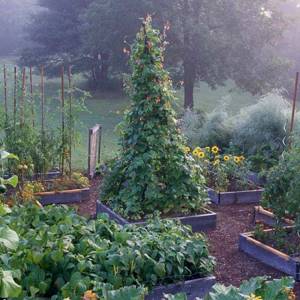
Arch support
Arched supports always look festive and elegant. Although they have a complex design, they can also be made independently.
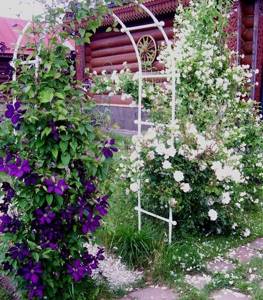
Suitable materials are metal, wood, plastic, brick or stone.
The easiest and fastest way is to assemble it from plastic pipes, which are buried at the ends into the ground, and fastened along the sides and center with wire.
But in the fall it must be dismantled and sent for storage in a barn or garage. Therefore, it is better to make an arch from metal. It is more durable and decorative. To make it you will need:
— steel rod with a cross section of 10×10 mm;
— pipe with a diameter of 31-33 mm;
- welding machine
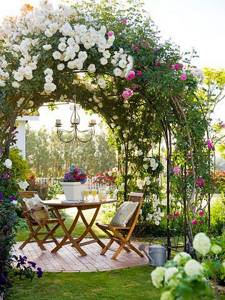
Cut 4 support pillars from the pipe, weld rod arcs to them. For convenience, all welding work is carried out on the ground. The structure is then raised, leveled and the support posts are concreted into the ground. All that remains is to paint.

Pergola support
This is a new and somewhat exotic device.
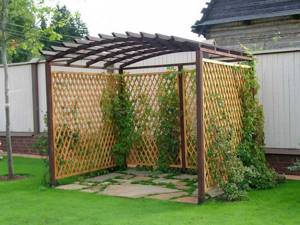
Translated from Italian it means “canopy” or “extension”.
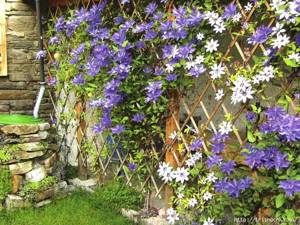
The pergola has served as a support for vines since ancient times; nowadays it is also used for decoration.
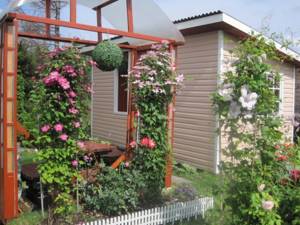
Support for climbing plants is best made of wood.
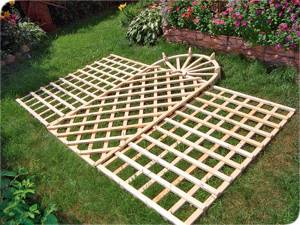
To do this, you will need 8-10 wooden beams measuring 50x100 mm, 4 beams for pillars 100x100 mm and concrete mortar. The work process needs to begin:
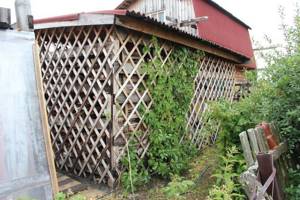
- by marking the area in the form of a square with a side of 2000 mm; - dig holes in the corners about 60 cm deep; — install the support beams in the holes, level them and fill them with concrete;
- cut grooves 35 mm wide and 50 mm deep in the beams; - cut the beams at the edges at an angle of 45 degrees for decoration; - after the concrete has hardened, secure two beams to the supports and lay the rest on them.
There are other supports that you can use for your site.
With a little imagination and skill, you can make some pretty interesting and unusual supports.
Source Source
Unusual fastening methods
In addition to the above-mentioned usual methods of attaching tomatoes, there are original and, at the same time, practical options for gartering tomatoes using scrap materials. For example:
Vertical reverse taper design
It is a structure of several hoops of different diameters, which are fixed on supports installed at an angle to each other. The hoops are located evenly along the entire height of the structure from bottom to top, starting from the hoop with the smaller diameter to the larger one. This cone-shaped design allows you to reliably protect the tomato bush from recurrent frosts.
Inclined lattice A-frame design
It is a spatial structure of elongated A-shaped gratings placed at an angle to each other, made of small-diameter tree trunks, wooden rods or stakes.
Inclined lattice V-shaped design
It is a structure that essentially resembles an “inverted” image of the previous structure. It consists of V-shaped gratings that are shortened and inclined in the opposite direction from each other.
Gartering tomatoes is one of the most important and responsible stages in the process of growing tomatoes.
This procedure guarantees an increase in yield, an increase in fruiting time and a more efficient use of sown areas.
Grids
A chain-link mesh or plastic construction mesh is similar in principle to a rope support - it also needs a frame or an attachment point. Most often, a metal mesh serves both as part of a fence and as a supporting element for a hedge. Clematis, bindweed, peas, cucumbers and other soft-stemmed plants can easily climb thin twigs. But for grapes or climbing roses, the mesh will not be strong enough.
It is advisable to grow annual plants along the grid, which can simply be cut off in the fall, since it will be very difficult to untangle the stems from the cells, and it is almost impossible to lay the entire structure for the winter.
The supports of the mesh, dug into the ground to a depth of 70 cm, must be at least 1.5-2 m apart from each other, otherwise it will bend under the weight of the plants.
Garter methods
Thanks to the correct garter, you can get soft and reliable support. Since there are many options for gartering, you can choose the best option that will not damage plants grown in open ground.
On the pegs
This method has long been in great demand. Thanks to it, reliable support is achieved for weak tomato stems. To tie bushes to stakes, you need to choose stakes with sizes that will correspond to the height of the plants. Then, using a rope, cut the material for the garter.
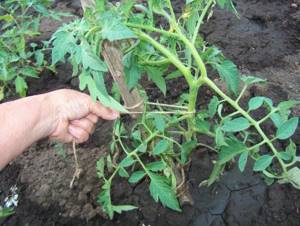
On the pegs
Place pegs near each bush. These can be products made of metal or wood. Before staking the plant, it is necessary to destroy harmful microorganisms from the staking material. To do this, you need to boil it in water. Tie the stem of the bush near the top. Wrap the rope around the plant, not tightly, but several times, then tie it in a knot. As soon as the bush begins to grow, the rope will need to be lifted up or another garter made and the old one dismantled. But what is the most correct tomato garter in a greenhouse, and what it looks like can be seen here in the photo.
To the trellis
This garter option must be used when growing tall vegetable crops in open areas. Then the chosen fastening method will prevent them from falling. You can make the trellis yourself. To do this you will need to use wooden pegs, nails, slats and wire. For support, you can use a post made of metal or wood. A total of 3 of them will be required.
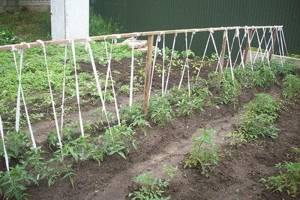
To the trellis
The height of the supporting element should be 3.5 m. After installing the trellis, its height will reach 3 m. The supports are installed in one row at a distance of 4 m. Install slats at the top of the pillars, securing them with nails. Now stretch the wire along the supports in 3 rows, maintaining a distance of 1 m. But how to garter cucumbers in a polycarbonate greenhouse is shown here.
The installation of the lowest wire should be 20 cm from the ground level. After installing the frame, use a nylon rope to create a mesh with cells. For these purposes, you will need to wind the rope in increments of 20 cm. You will have to start making the trellis even before planting the seedlings. And it is planted towards the trellis, but as it grows the bushes are directed upward.
In the video - a tomato garter in the open ground:
Linear fixation
This garter option is also very effective, but simpler. By analogy with the previous option, it is necessary to mount supports. The wire is stretched in one row.
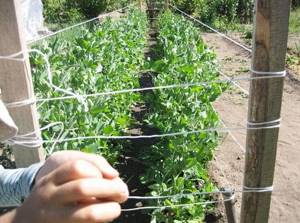
Linear fixation
Stretch a rope over each plant to the wire. It will act as a fixation for the tomato stems. There is no need to tie up the plant, since as they grow they will wrap around the rope and at the same time be securely attached to it. It will also be useful to learn about how cucumbers are gartered in open ground.
Application of cells
To secure tall tomatoes grown in open areas, you can use a method that allows you to make a separate mesh for each bush. It must be rigid, and wire and metal arcs are suitable for its creation. The arcs must be bent and installed above the planted plants. After this, connect them using wire. The planted crop must be secured with a rope to the cage crate.

Using cells
There is another option - planting plants in pyramidal caps. They are made from 4 twigs. This cap can accommodate 4 bushes. Dig it in when planting seedlings and secure it with wire at the top of the twigs.
Hook mount
This version of the garter has common similarities with fastening to a trellis. It is necessary to install high posts along the edges of the bed. Secure a wire between them. Tie a fishing line to it at intervals of 30 cm. In this case, the fishing line must be equipped with rings and hooks.
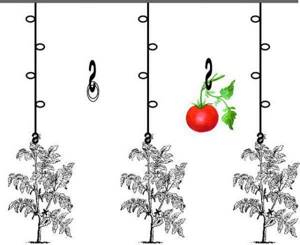
Fastened with hooks
It is the latter elements that are necessary for fixing the stems of the bushes. This method of gartering is very effective, but labor-intensive and inconvenient to use, so it is not used often.
Tomato garter
Depending on the method of planting the crop, different types of garter are practiced. In summer cottages and small personal gardens, the most common method is to strengthen the stem with stakes. What to make pegs for gartering tomatoes from? Suitable for making a support:
- tree;
- metal;
- fiberglass;
- plastic.
Tree
They use tree branches, first removing the bark from them, which, if the tomatoes are watered abundantly, can produce roots. The length of the sticks depends on the expected height of the bush. If the variety is tall, then the peg should be at least 1.5 meters. An old fence picket and slats with a diameter of 20-25 mm will also work. You can use regular cuttings from shovels. To prevent the underground part from rotting, you need to burn it on fire. Thin wooden pegs will not provide a strong support for a tomato bush, because they can break under the weight of the fruit. It is recommended to sand any rough spots on a wooden peg.
Note! One end is sharpened to make it easier to drive it into the ground
Metal
Metal garter stakes are rarely used due to the high price of this material. You can also successfully use fittings and thin pipes left over from construction work. The height of the peg depends on the tomato variety. A diameter of 5-8 mm will be quite enough.
Fiberglass
Fiberglass tomato pegs are durable and look aesthetically pleasing. It is an alloy of plastic and metal. Externally light, ribbed, similar to metal fittings. Produced by Stekloplast LLC, located in Moscow. Experienced users recommend using material with a thickness of at least 10 mm, cutting into 1.5 m sections. It does not bend under weight, does not break, and is resistant to corrosion and chemical attack. In construction it is used for concreting the foundation. The reinforcement is sold, twisted into a ring, approximately 50 m long. Cutting into pegs in a twist is dangerous, since the rod immediately straightens and can cause injury. Before cutting into pieces, the fiberglass must be carefully unrolled, preferably with two people. You can cut with a regular hacksaw with a metal blade.
Note! It is not worth stabbing, as the reinforcement may burst from the impact. After cutting, it is better to sand each peg with sandpaper
It should be stuck or screwed into the ground.
Plastic
Garter material for plastic tomatoes can be purchased at gardening, construction and other specialized stores. It is, of course, not as durable as metal and wood, but it looks neat and aesthetically pleasing. Often there is a light metal rod inside the plastic, which gives the peg greater hardness. Plastic pipes cut to the required height are also suitable.
Wooden trellis
If increased load , and a lattice made of branches may not withstand the weight of fruits or plants, we recommend a lattice made of lumber.
To prepare such a durable grill, you must have:
- Planed slats with a cross section of 30 x 3 mm for crossbars.
- Handle from a shovel or rake.
- Self-tapping screws for wood.
- Dowel with a diameter of 10 mm.
- Product for treating wood against mold and spoilage, antiseptic.
- Moisture-resistant wood adhesive for exterior use.
- Chisels, hacksaw and screwdriver or screwdriver.
- Electric drill and drills for holes for self-tapping screws.
- Paint, several brushes for painting (instead of paint, you can use varnish or impregnation).
In order to get a high-quality trellis, you should start assembling the structure from the base. You will need four strips:
- Two for horizontal positioning (220 cm).
- For vertical placement (180 cm).
Depending on your wishes, crossbars are made. Their length depends on the plants and their location, the building standing nearby, and other buildings. You need to start from 40 cm +/- 10 cm.
All planks are secured using a transverse cut. Square trellis windows look good. The structure must be glued with moisture-resistant glue.
We use screws to fasten the grille parts. The resulting trellis will be correctly attached to a house or other structure. We will fasten it using a dowel. We drill a hole corresponding to the dowel (preferably two or three) along the edges and in the center of the structure.
When everything is ready, we treat it with an antiseptic, it protects against moisture and termites . Additional protection will be provided by paint, which will extend the life of the product.
Remember!
If you think that the structure is weak and will not withstand the harvest, it can be strengthened with self-tapping screws.
Supports for seedlings after planting in open ground
Gardeners most often opt for trellis structures, where the main material for installation is wood: the supports are posts and horizontal wooden slats. You need to know some points regarding how to position them correctly and extend their use:
Since the tree deteriorates faster, such tomato supports should be removed at the end of the season. Storing in a dry place will extend the life of the trellis. In addition, you need to cover them with paint, not for beauty, but to extend their service life. Moreover, next year the support can be installed in a different place, which complies with the rules of crop rotation.
Installing tomato stakes
Rows of tomatoes when grown on a trellis should be planted from north to south. With this planting, the bushes will be illuminated by the sun throughout the day. A good option is to plant seedlings in two rows with a staggered arrangement.
Important! The paths between the supports should be wide: the wider they are, the more nutrition the plants receive. And it will be easier to care for tomato bushes
When the seedlings are already planted in the ground, the slats are deepened by 20 cm with a sharp edge. A nail is driven in at a distance of 20 cm from the top edge on the post; this will fasten the transverse slats. A distance of no more than 2 meters is maintained between the posts. After a week or a week and a half, a garter is attached to horizontal slats.
Following the recommendations will help you get a harvest of tomatoes located on the trellis.
Interesting! Not all garden lovers have the desire to grow tall tomatoes. But their yield is several times higher than that of low-growing varieties.
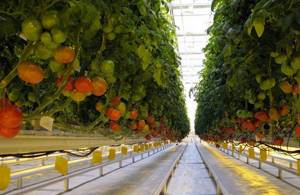
Harvest tall tomato
How to install a trellis correctly
If you intend to install the trellis as a free-standing structure, for example, in the middle of a flower bed, it must be given rigidity.
A support pole can easily handle this task. Proper installation of the trellis A reinforcement rod about 1 cm thick, driven 50 cm into the ground, will act just fine as a support post. You can also use an ordinary wooden block, the bottom of which needs to be treated with resin and wrapped in a piece of roofing material, but such a post will not last very long. Remember also that when installing a free-standing trellis, you need to take into account the wind loads to which it will be exposed: a dense green “carpet” in the wind turns into a kind of sail and the structure simply may not withstand the load, but do you need it?
Application of fiberglass reinforcement
We decided to take a closer look at the areas of application of fiberglass reinforcement in the country, and we will give some examples for this.
Bandaging the foundation for country houses
The material can be used to reinforce foundations for low-rise construction, for the construction of a summer kitchen, gazebo, shower and toilet, stove and barbecue, sauna and barn.
The reinforcement is plastic and does not require special skills for assembly. It is enough to place the reinforcement in the place where the foundation is poured, bandage it and pour the concrete. Due to its characteristics, the reinforcement will qualitatively strengthen the foundation, prevent it from cracking and will not serve as “cold bridges” like steel reinforcement.
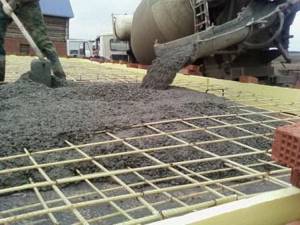
Pouring reinforced areas
At the dacha, areas are often required, for example, for parking a car, for creating a canopy, and so on. We use different materials for their construction - paving slabs, masonry, simple backfilling with crushed stone, but you can always make a high-quality concrete platform reinforced with fiberglass reinforcement. What is important here is the correct calculation of the depth and dressing, then only the simplest installation and laying of high-quality concrete.

Greenhouse for a summer residence made of composite reinforcement
We built greenhouses from pipes, steel reinforcement, metal profiles, wood, metal corners and other materials, but now we have the opportunity to install a spring greenhouse in a matter of hours, with virtually no costs.
We only need to cut the rods to the required length and install them in a wooden frame or directly into the ground. Afterwards, stretch the film over the top, bring high-quality fertile soil inside and begin planting.
Since the reinforcement is light but durable and is not afraid of moisture and oxidation, such a greenhouse will have only one drawback - the film, which will have to be changed every year or two.
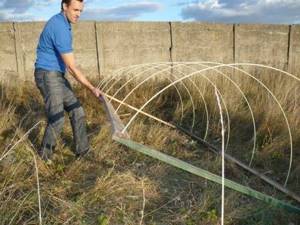
Trellis made of fiberglass reinforcement
We have already considered trellises made of wood, pipes, thick wire and other materials earlier. But now you can simply cut pieces of reinforcement from a skein, install a couple of supports for vertical gardening, and make the frame out of composite material. You won’t have to spend a long time tightening bolts and nuts, welding, or hiring specialists. It will be enough to tie the frame with clamps, applying pieces of reinforcement to the main supports in the right place, and manually tightening the clamps.
In addition, strong and durable reinforcement can be used for supports in the garden and garden. You can easily make pegs for flowers and ornamental shrubs, peppers and tomatoes.
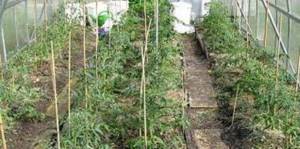
The use of fiberglass reinforcement in a dacha is not only possible, but moreover, completely justified! It is cheaper than steel, easy to install, great for serious and light structures, does not require special equipment and fits perfectly into the design of the garden and lawn, as it can be selected in different shades. The fittings will last for many years without painting or protective agents, will help you save money and increase the practicality of working in the country.
Description of the support and its varieties
With its appearance, the trellis serves as a reliable and durable support for growing ornamental and cultural plants in the country and in the garden. Trellis structures are involved in the active growth of crops and are used to decorate unsightly places on the territory. In any area you will find something like this:
- Old fence;
- Outbuilding;
- Bare brick wall;
- A fence or enclosure for a dog.
Note that climbing plants only look for vertical structures. They use everything that looks up to grow.
Remember!
Without proper control, the climbing plant will quickly cover the vertical wall. It will turn into a green blanket with beautiful flowers.
The design of the support is made depending on your own wishes, which should correspond to the location and needs of the plant for which the trellis is being made. The most common forms are:
- Rectangle;
- S-shaped;
- Triangle;
- Fan;
- Arc.
By making several delicately decorated supports, you can arrange a beautiful gazebo .
You can cover the rest area from prying eyes with climbing plants. Add horizontal ribs to the structure and let, for example, grapes trail along them. You can let the flowers wrap around several nearby metal stands. Connect them at the top and you will get a great shaded area for summer relaxation.
Trellis are used in gardening; they are used to grow:
- Cucumbers;
- Grape;
- Strawberries;
- Tomatoes;
- Decorative climbing plants.
Everything you need to create trellises can be bought at the store. However, in gardening there is always suitable material for making your own support:
- Slats and planks made of wood.
- Metal corners and fittings.
- Plastic mesh and rods.
- Rope and nylon threads.
- Branches, bicycle wheels, etc.
Remember!
It is necessary to anticipate the possible load on the trellis. It is necessary to create the entire structure based on the weight of foliage and fruits.
How to tie tomatoes on trellises
And now the trellis is ready, the planted seedlings begin to grow. There is no need to wait until the tomato begins to lean to the sides as it grows. As soon as it reaches the height of the first stretched cord of the trellis, you need to direct it towards the fastening, tying it lightly. The garter can be done in two ways:
- As they grow, tie the stems to a horizontally fixed wire;
- grab the plant from above, lowering the garter down.
You cannot pull the stem tightly, as it will grow not only in height, but also in thickness. It is also undesirable to pull several stems together. For full development, tomato culture needs free space.
For garters you need to use strong and wide ribbons and strips of fabric.
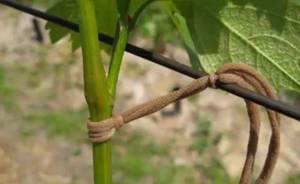
Tomato garter rope
Important! Fishing line, wire, or fabric with a rough texture should not be used. By cutting into the stem, these materials will cause the formation of wound surfaces through which pathogenic microorganisms can penetrate into the plant.
The ideal option would be a soft cotton fabric with a width of 3 to 4 cm. Tying tomato bushes to one support makes it possible to prevent thickening, which tomatoes often suffer from.
Tips and tricks for gardeners
- It is better to buy seeds of varieties and hybrids that have immune protection and disease resistance;
- trellises of different types make it easier to care for tomatoes, provide access to air and sunlight, since ultraviolet radiation kills infections and pathogens;
- tomatoes love hot weather and sun, so trellises and supports are placed in the direction from north to south, the sun will heat the bushes all day.
- Wide passages should be left between the supports to increase the feeding area and ease of care and harvesting;
- the condition of the trellises must be monitored by covering them with antiseptics and removing them, if possible, for the winter to extend their useful life;
- You should also tear off the lower leaves of tomato plants; in contact with the ground, they can be affected by diseases. To prevent the infection from spreading, they must be removed.
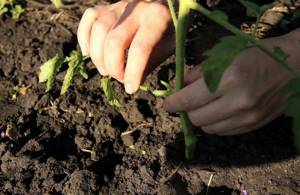
It is necessary to pick off the lower leaves of tomato plants
Although you can buy almost any kind of tomatoes in supermarkets and markets, many gardeners prefer to grow these nightshades themselves, investing their own energy. In constant search for improved methods of cultivation, more advanced devices (for example, trellises), they put a lot of effort into obtaining a decent harvest. This is why homemade tomatoes taste so much better.
Options for trellis construction for vegetables in open ground
After installing the frame, you can begin making direct support for the “movement” of the shoots towards the sun.
The following requirements apply to trellis netting for vegetable crops:
- the optimal cell size is 10x10 or 15x15 cm;
- the material must be sufficiently strong and rigid;
- the cells should maintain their shape and not move to the side;
- resistance to sunlight and precipitation;
- environmental Safety.
The easiest and fastest way to make a trellis is to purchase a ready-made PVC mesh from a gardening store and attach it to an installed frame.
However, such a support will only last a few seasons. The mesh is prone to sagging, especially if the thickness is incorrect, which complicates harvesting. At the same time, making a reliable and durable trellis with your own hands is not so difficult.
A simple, but at the same time original support for cucumbers
To make a full-fledged trellis, you will need minimal construction skills. First, low pegs are dug in next to the seedling bushes. If the frame is wooden, then nails are driven into the top bar opposite the pegs installed below, bending the heads so as to form hooks. For a metal frame it is convenient to use pieces of rigid wire.
Another option: cut the twine into 5 m lengths, fold it in half and wrap the central part around a peg, and tie the two ends to adjacent nails. The result is a cross trellis with better conditions for shoot growth. In the fall, the twine can simply be cut off along with the withered lashes.
A trellis in the form of a wooden lattice is a very fast and low-cost way to make a support for tomatoes or cucumbers. The grille is assembled from slats 2-3 cm thick using screws or nails.
First, vertical slats are attached to the frame, and then horizontal ones, which divide the structure into cells. The result is a rather decorative and durable support.
You can also make a strong and durable trellis from wire. Horizontal rows are made of steel wire with a thickness of 2 mm. It will serve as the main support to which the vertical threads will be screwed. For these purposes, aluminum or copper wire, which is corrosion-resistant and quite flexible, is better suited.
At the first stage of manufacturing, staples are made from nails on horizontal strips and vertical posts. The distance between the staples will correspond to the selected cell size. The prepared pieces of wire are first stretched horizontally and then vertically. To secure the cells, vertical threads need to be twisted around each horizontal wire. As an alternative, you can use ready-made metal mesh from an old fence.
When and how to tie up tomatoes
The process of tying tomatoes involves attaching the stem or branches of tomatoes to an installed support. The procedure is repeated as the height of the bush increases.
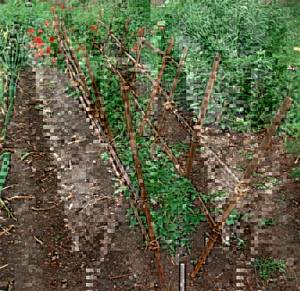
Garter of tomatoes
Methods for gartering tomatoes
Based on the preferences and capabilities of their site, gardeners use various methods for gartering tomatoes. The scheme for planting seedlings and the materials that will be used to create additional support for tomatoes are thought out in advance.
How to tie up tomatoes in a greenhouse and in open ground:
- Horizontal garter on a trellis. This method is suitable for large numbers of bushes. At the beginning and end of the tomato ridge, stakes are installed. A wire is pulled between the stakes. The first level of wire or rope is pulled at a distance of 40 cm from the ground, the next level as the bush grows. Plants are attached to a stretched wire.
- Garter to pegs. Near the tomato, stakes are driven in, the height of which should be higher than the bush. Metal rods, plastic pipes, and wooden sticks are used for pegs. The stem should be tied to these devices with a non-rigid synthetic material. Also, clips or clamps, sold in garden stores, can be used to attach tomatoes to a peg.
- Vertical trellises. Supports are installed along the edges of the tomato row, and a strong wire is stretched from above. Each tomato plant is secured with rope to the base and then attached to the top rail. The stem is wrapped around a stretched rope to prevent it from falling to the ground.
- Installing metal cages is one of the options for vertical support. Each tomato bush is placed in a metal cage shaped like a cylinder. The plant should be tied down constantly as it grows.
- Tension of a mesh fence. A metal mesh is dug along the bushes to a depth of 40 cm. The tomatoes are attached to supports installed along the edges and in the middle of the bed. The plant is attached to the net using twine and clothespins.
- Oblique garter with tomato using caps. They construct a pyramid from wire or wooden sticks and place it on the garden bed during the period of planting seedlings. When using a pyramid, tomatoes are planted at intervals of at least 1 meter.
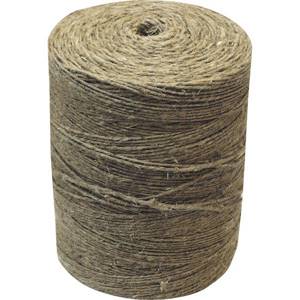
Tomato garter material
It is not recommended to use hard materials for gartering tomatoes; they can damage the stems. Also, used ropes and twines are not suitable for gartering. They may contain fungal spores and infectious agents.
Materials for gartering bushes:
- nylon cord,
- wide and thick rope,
- leg-split,
- old stockings or knee socks,
- other synthetic material with a low stiffness index,
- clips,
- clothespins.
Important! Before gartering, the material is boiled or treated for disinfection. Clips for tying - plastic clips that resemble clothespins
They are used to attach the stem to a vertical or horizontal support. The advantage of clips is the presence of sections that prevent the clips from sliding along the support
Clips for tying are plastic clips that resemble clothespins. They are used to attach the stem to a vertical or horizontal support. The advantage of clips is the presence of sections that prevent the clips from sliding along the support.
Tomato clothespins are clips that have a ring or spring mechanism. With their help, bushes can be attached to the walls of the greenhouse, horizontal slats, ropes stretched from the ceiling, or to neighboring stable plants.
Trellis for garden blackberries
It is easy to make such trellises with your own hands. Considering the weight of blackberry branches with ripe berries, they will have to be made from hard materials.
For the base, you need to dig iron or concrete pipes into the ground. Two-meter wooden posts are vertically attached to them. Four transverse strips (60 cm) are nailed to them at a distance of 40 cm from each other.
A wire is stretched between the posts, on which the blackberry branches are placed. The technology for growing this crop is simple. The bush is divided into two halves. In one direction - one-year shoots, in the other - two-year stems . Older shoots are removed.
Thanks to the trellises, the blackberries are well ventilated and warm. It becomes very convenient to harvest, as access to all branches is simplified.
DIY garden trellises
1
( 20 ratings, average: 4.30 out of 5)
Back
Finishing the facade of the house with siding and artificial stone
MORE
Target garter tomato
The main reasons for gartering tomatoes:
- There is a high risk of damage to tall plants due to the weight of the fruits, which increase during ripening;
- The ability to apply fertilizer directly at the root of the bushes without affecting the plants and fruits themselves, which helps prevent the occurrence of chemical burns and mechanical damage;
- The fruits are located above ground level, which protects them from diseases and attacks by various pests;
- The procedure for caring for plants (pinching, mulching, pinching and spraying) is significantly simplified;
- The degree of protection of fruits and green mass from high humidity increases;
- The degree of illumination of plants increases for their full and timely development.
Tying up plants grown in open conditions, among other things, allows you to reliably protect the plants from damage due to heavy rainfall and strong winds.
The most popular way of tying tomatoes is to attach them to vertical supports - pegs. Supports can be made of various materials (wood, iron, metal-plastic, plastic), both factory-made and improvised elements.
Metal-plastic pegs have a metal core covered with a thin layer of plastic. Plastic pegs are made of especially durable plastic. Factory-made pegs of various sizes with pre-applied elements for staking plants can be purchased in specialized stores.
Wooden pegs are the most widespread due to their price and availability.
Tomato garter to improve fruiting
This is interesting: Tomatoes La la fa - you need to know


